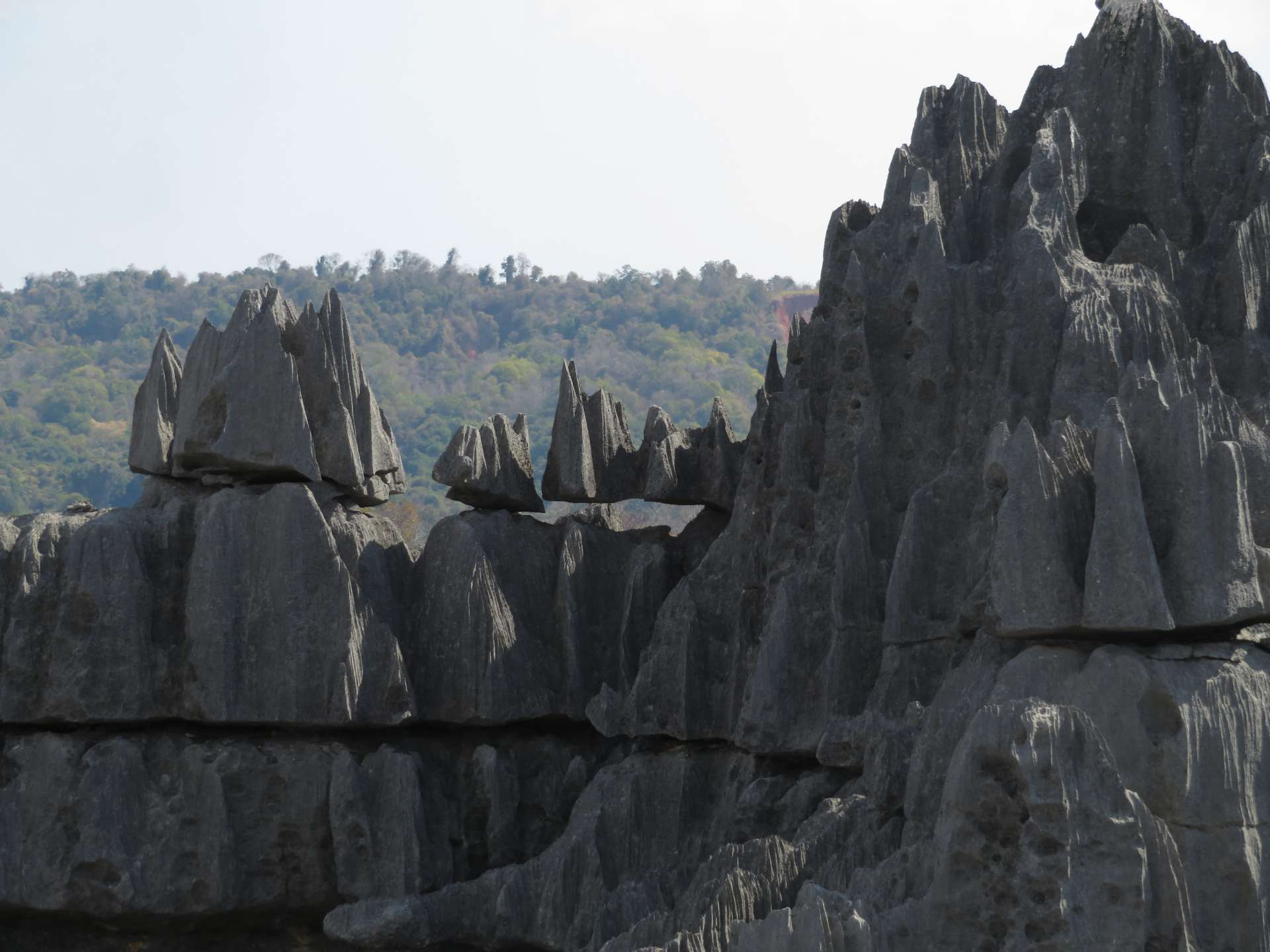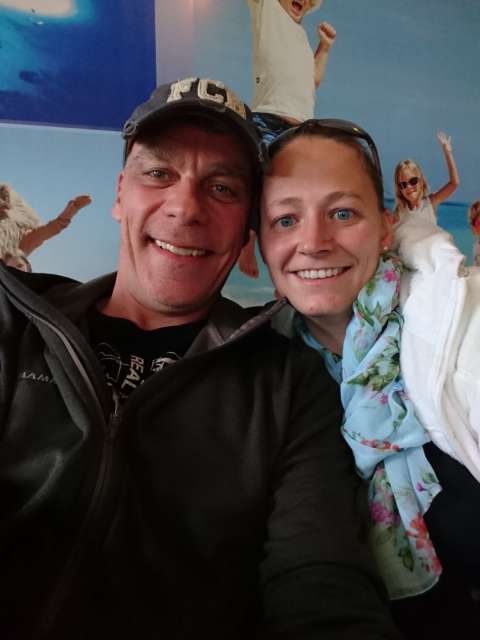The Tsingys of Bemaraha
പ്രസിദ്ധീകരിച്ചു: 10.09.2016
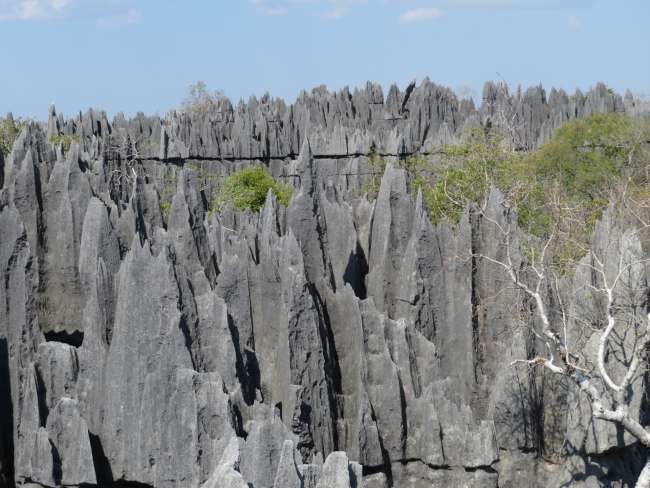
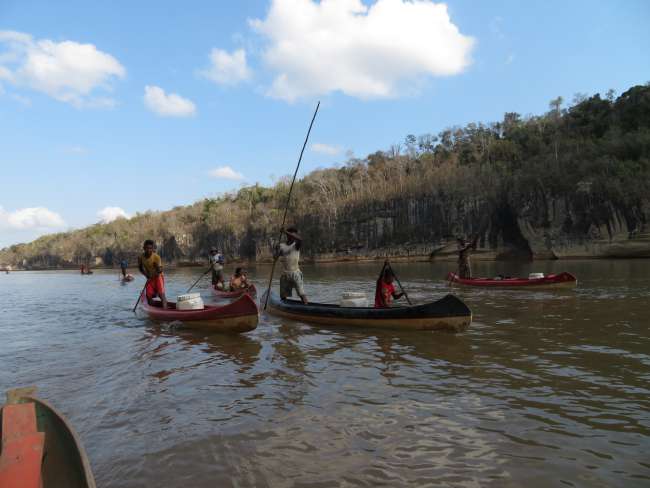
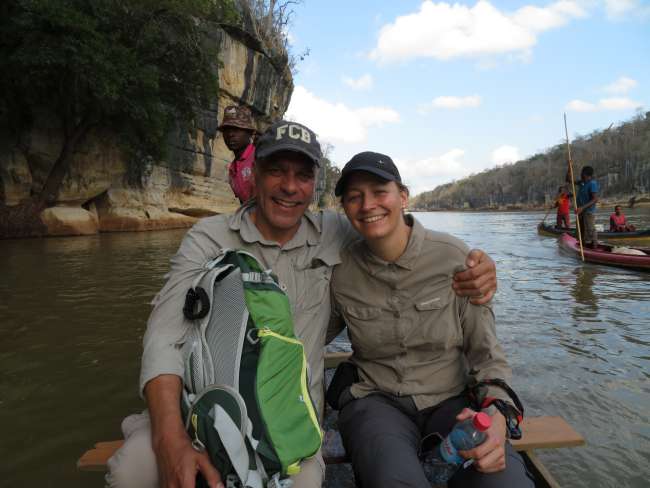
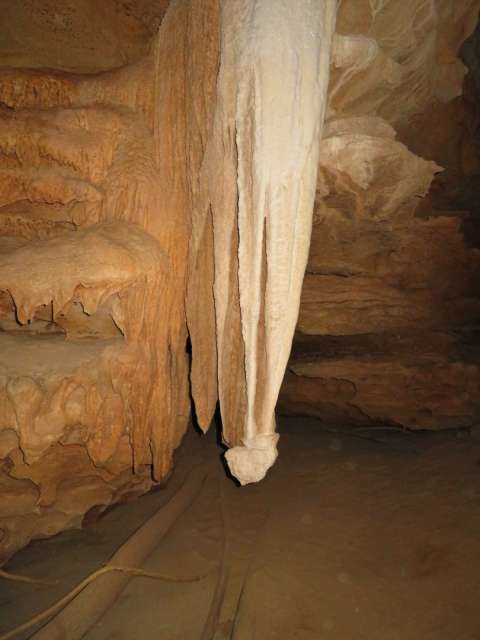
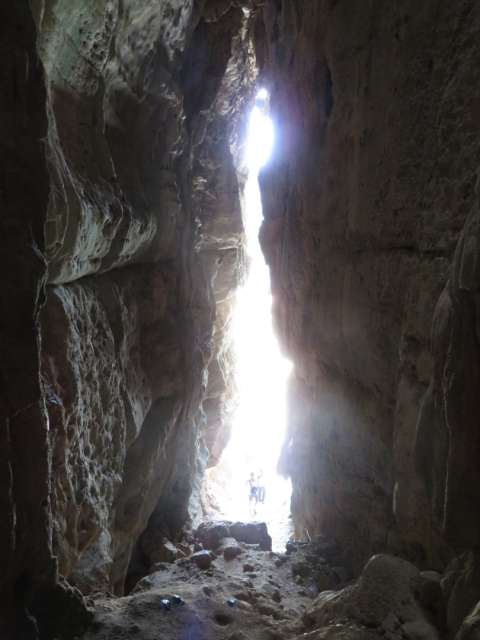
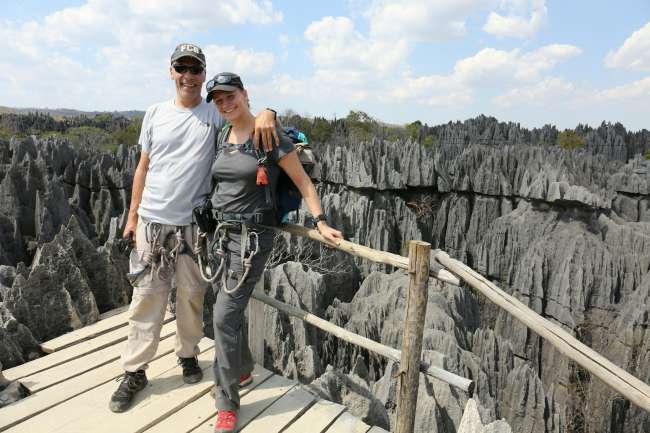
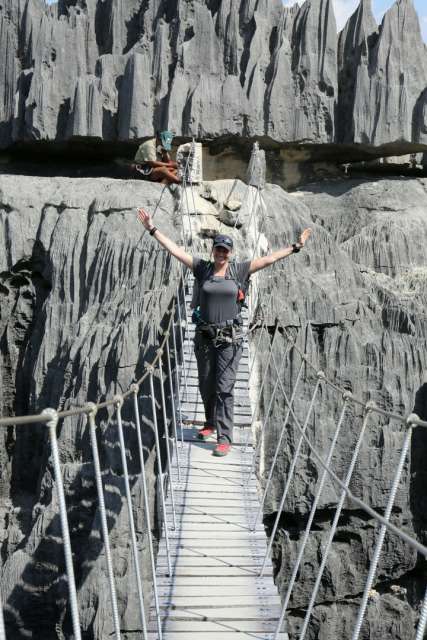
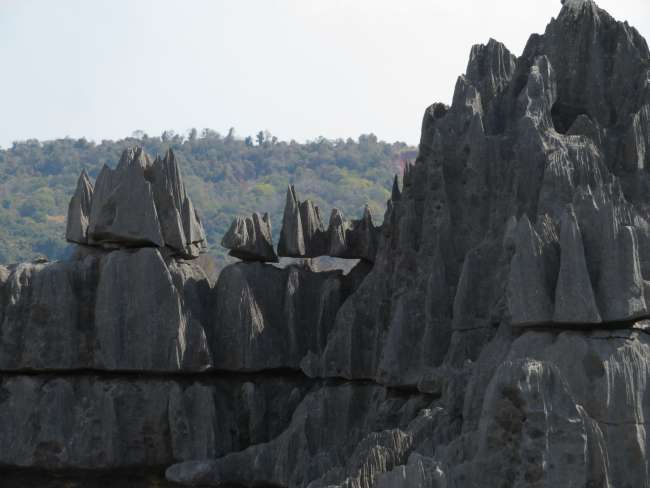
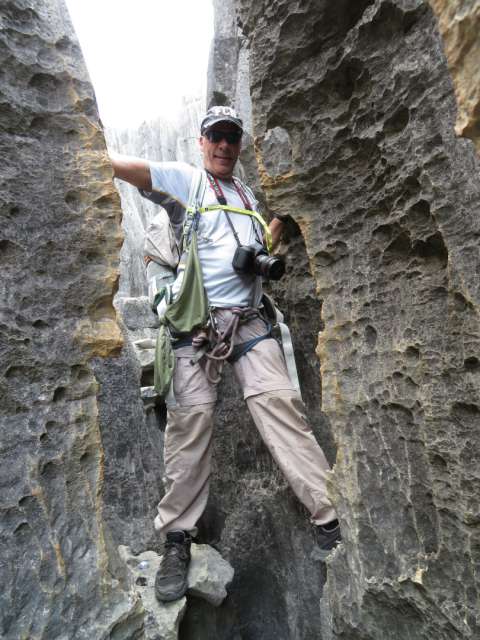
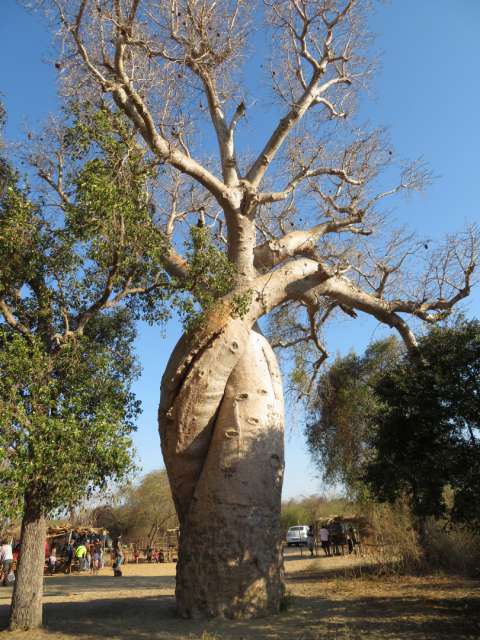
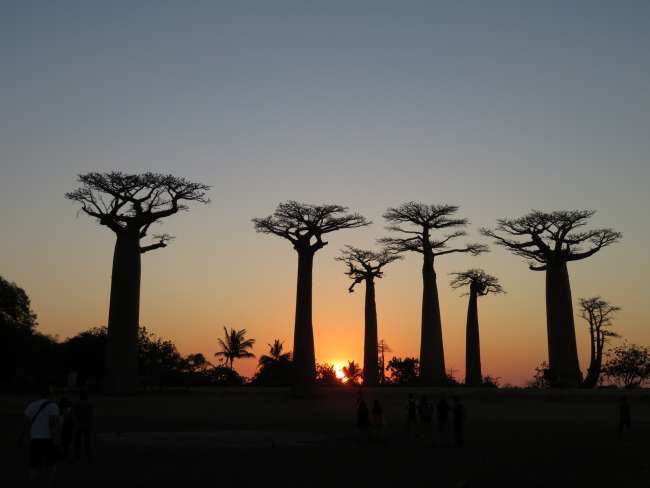
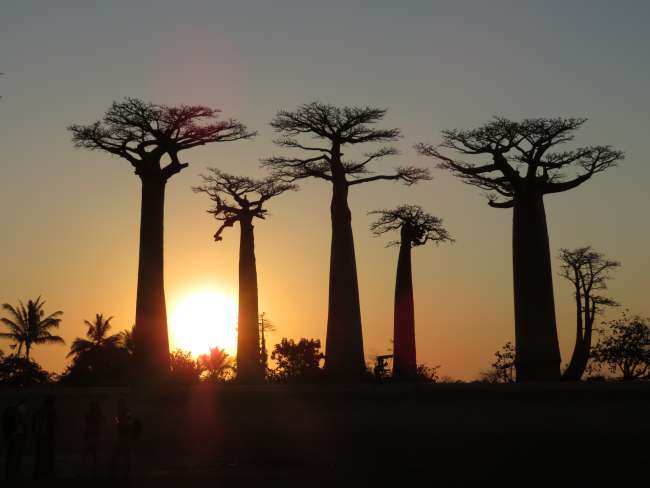
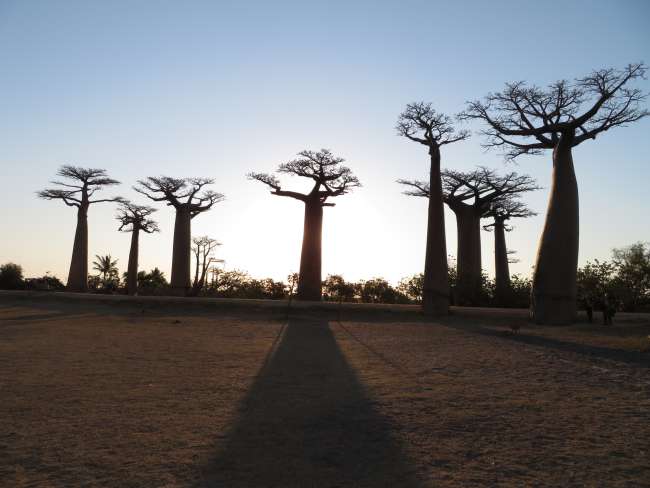
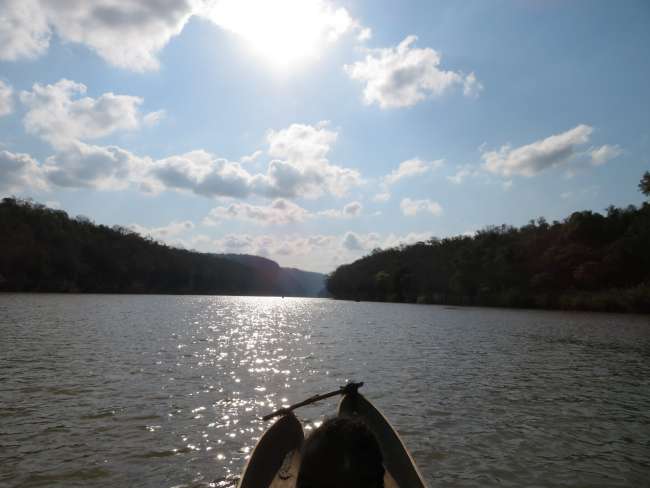
വാർത്താക്കുറിപ്പിലേക്ക് സബ്സ്ക്രൈബ് ചെയ്യുക
After a sleepless night (I will explain why later) and a meager breakfast, we book the Tsingy Tour including a guide. Charline, our guide, takes us first in the pirogue (dugout canoe) to the Manambolo River where we visit various caves and a Vazimba tomb (ancient tribal people). Then we head to the Tsingys, the main goal of our arduous journey here. The Tsingys are razor-sharp limestone needles that rise up to 40 meters into the sky. They were formed through years of erosion.
The Tsingys only exist on the west coast and the Tsingy de Bemaraha, where we are, are the largest. They are part of the UNESCO World Heritage Site and are about 17 km long. We receive the climbing harness and set off. It takes about 45 minutes through the forest before we spot the first Tsingy peaks. Harness attached and off we go: climbing and climbing until we reach the first viewpoint. WOW! What an incredible sight!
We are in the midst of the rock spires and we are fascinated. Some of the rock spires have little hats on them that seem to float. Often these are only attached in one place and the rocks tower above the ground. AMAZING! An incredible sight. Between the rock spires, there are actually trees growing, seeking the light. Plants also grow on the rock itself - I have no idea how! And it's incredibly hot. We are being grilled between the rock spires. The climbing continues over a shaky suspension bridge to the second platform: here too, the view is fantastic: rock spires as far as the eye can see. And believe us: the edges are really sharp, you have to be careful where you touch and otherwise you have small holes in your palms from the sharp rocks. After feasting our eyes on the rocks, we start the descent. It goes through narrow rock crevices where we either have to take off our backpack to fit through or we have to crouch and crawl on all fours. The exit finally comes after crossing a cave with a narrow entrance and a large 'hall'. Here you can see roots hanging down. There are small plants on the rocks that send their roots several meters through the air to reach water. Sometimes the roots reach 10 meters through the air. After exiting, we walk back through the forest and spot a few lemurs in the treetops. A female with a baby is particularly cute. The little one makes its first jumps alone from branch to branch and back. I could watch for hours...
After dinner, we prepare for a second sleepless night. As mentioned earlier, we could hardly sleep the night before: I woke up at some point from a noise. The noise clearly comes from rats, making themselves known in the attic (or even in the bungalow itself??). They run across the floor, you can hear their claws on the floor, and as if that wasn't enough, they make squeaking noises or fight each other. Sometimes you can also hear smacking eating noises. And believe me: sometimes it sounds like they are right next to your head. There's no more sleep for me, I'm afraid they will climb up the bed in search of food. So I wake up armed with a headlamp, making sure none of them come up... For the second night, I had planned to just sleep with earplugs. If I don't hear the critters, it can't be that bad. Wrong! The plan fails at the latest when I lose the earplugs at night. So another sleepless night. The next day, we ask for another bungalow. They assure us that there are no rats, only bats, but I don't believe a word. I have never heard bats running on all fours across the floor. And I'm pretty sure I can distinguish the sounds they make. Anyway, we get another bungalow. It's smaller, but we don't mind...
Before our third night, we go visit the 'little Tsingys'. These are actually like the big ones, just smaller - but no less spectacular! Then, on the recommendation of our driver, we go to a Malagasy restaurant. We eat a delicious duck and enjoy the view over the valley. After that, we take a nap in the middle of the afternoon: the sleepless nights are really exhausting us... For sunset, the driver takes us to an elevated spot. There's a luxurious hotel there - unbelievable considering the condition of the access road. We enjoy the sunset with a drink and decide to have dinner there as well. On the way back, the driver shows us 3 different types of sleeping chameleons. So cool! We are skeptical about our last night here at the hotel, but we are lucky: there are no rats to be heard. Finally, a night of uninterrupted sleep...
The next morning, we get ready for the journey back: over 200 km on dusty and bumpy roads. This takes the whole day. We pass through village after village, waving children greet us everywhere. Even now, there are people, especially children, on the roads and at every puddle. Just imagine: the average age of the island is 18 years. Unbelievable... Equally unbelievable is the number of burning fields and forests that we pass. Pillars of smoke rise up everywhere. At one point, the fire even reaches the road, you can feel the heat as you drive by. The driver says to us: 'There are two things that destroy Madagascar: fire and politics!' How right he is and how tragic this actually is...
വാർത്താക്കുറിപ്പിലേക്ക് സബ്സ്ക്രൈബ് ചെയ്യുക
ഉത്തരം
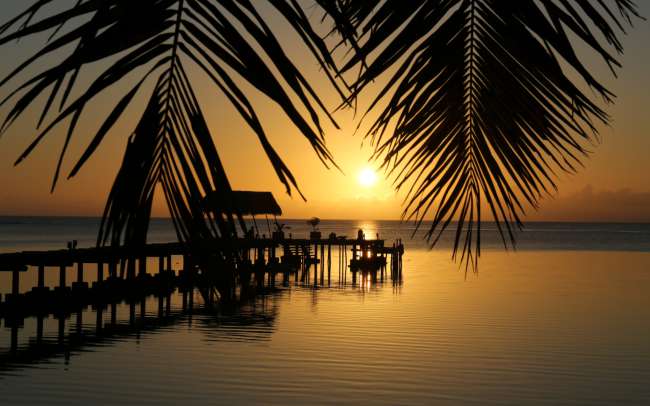
യാത്രാ റിപ്പോർട്ടുകൾ മഡഗാസ്കർ
